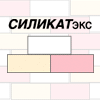Publication Ethics of the “Stroitel’nye Materialy®” Journal
The “Stroitel’nye Materialy®” Journal strictly adheres to the international standards of publication ethics, published on the website http://publicationethics.org (Committee on Publication Ethics). The following ethical standards are generally accepted by the global scientific community and fully supported by the Editorial Board of the journal and its reviewers. These norms are obligatory for authors.
1. The originality of articles
For publication, the journal (in addition to specified reprints of articles from other sources, at will of the Editorial Board and by consent of the second party) accepts original, NOWHERE published articles. The use of over 10% of another own text (Verbatim copying) is not recommended. The use of a little part of own, previously published, text is possible with the obligatory reference to this text.
2. Inadmissibility of plagiarism
Plagiarism (from lat. Plagio – purloin), type of violation of the rights of the author or inventor. This is the illegal use under own name of somebody else’s work (sci., lit., mus.) or invention, rationalization proposal (fully or partially) without specifying the source of borrowing (Great Soviet Encyclopedia, vol. 19, M. Publishing House “Soviet Encyclopedia”, 1975, p. 648)
Under plagiarism the “Stroitel’nye Materialy®” Journal understands both verbatim copying and paraphrasing someone else’s text. Borrowing more than 10% of the article from the text of another author is not allowed. When a smaller amount of borrowing is used, a source link is obligatory. If the phrase is borrowed verbatim, it must be quoted. When illustrations, graphics and tables are borrowed, a source link is also obligatory.
Plagiarism can be detected both at the stage of the article receipt by automatic methods (with the help of software) and at the stage of peer-reviewing. All suspicions on plagiarism are carefully checked. If plagiarism is detected, the article is not accepted for publishing.
3. Peer-review
All scientific articles (besides the articles from rubrics “Information” and “Normative issues of the industry” and also advertising materials) are peer-reviewed by members of the Editorial Board as well as by invited reviewers.
The Editor-in-Chief determines the compliance of the article with the journal profile, requirements for article making, appoints the reviewer-specialist whose scientific specialization is the closest to the article theme.
The editorial board does not discuss with authors the compliance of their articles with the journal theme. The peer-review of articles is executed by independent reviewers and/or members of the editorial board, leading specialist and scientists of the industry. The peer-review is double blind, that is the author and reviewer don’t know each other. All discussions take place anonymously via the editorial office.
If the article contains recommendations for correction and modifying of the article, the editorial office sends a significant part of the peer-review to the author with a proposal to take them into account when preparing a new variant of the article or reasonably (partially or completely) refute them. The article modified by the author can be re-sent for peer-reviewing.
The author has the right to officially withdraw the article from the editorial office at significant remarks of the reviewer. Sending the revoked or rejected article to another publishing agency without making changes which take into account remarks and recommendations of the reviewer, the editorial board regards as disrespect for employees of both publishing agencies as well as for the reviewer. The detection of these precedents is a ground for denial of the author’s subsequent publications for ethical reasons
4. Data validation
Authors of published materials are responsible for the accuracy of the given information, accuracy of the data in the cited literature and the use of the data in articles that are not subject to the open publication. The Editorial Board can publish articles in order of discussion, not sharing the author’s point of view. If at any stage, a forgery or falsification of data is detected, the article is not accepted for printing.
5. Authorship
All those, who made significant contribution to the study, participated in the writing of the article text, are to be listed as authors. Other participants of the article preparation process can be listed in the Acknowledgments. Before publication, the final version of the article should be agreed with all authors( it is responsibility of a contact author (he should be listed in the “Information card” of the article)). Each author should be ready to be responsible for the article’s content.
Authors must clearly express their agreement with the rules of preparation of articles for publication, including peer-review, scientific and literary editing and bringing the articles to the editorial standards adopted in the journal. Authors must also agree to transfer to the journal their right to publish and disseminate articles in electronic and paper versions, including the placing of bibliographic information about the articles in the Russian index of scientific citation (RINC) and other databases of scientific citations and placing of full texts articles in the Scientific electronic library (elibrary.ru) to free access for all Internet users regardless of their category and location (the signing of a license agreement).
6. Preparation of the article for publication
Editing of the article conducted by the journal’s editorial office is a scientific and literature editing and bringing the article to editorial standards adopted in the journal. All the editorial corrections are agreed with the authors. The publication of the article is realized after obtaining the author’s agreement by the editorial office.
Publication Ethics of the“Stroitel’nye Materialy®”Journal
 |
 |
 |
 |
 |
 |
